When it comes to reaching your hair goals most people stress over the products they should be using. Using the right products is important. However, one of the most important things for healthy hair growth is to ensure that your body gets proper nutrition. In order to reach your hair goals you need to consume a certain amount of micronutrients, or major groups of nutrients that all of our bodies need. You can get most of these in a good hair vitamin like the VoiceOfHair Hair Gummies. In this article, I will explain 6 micronutrients for hair growth that your body needs and the best way to get them.
#1) Vitamin A
Vitamin A is a fat-soluble vitamin that is naturally present in many foods. This critical vitamin supports healthy vision, immune and reproductive functions in the body. Also, every cell in the human body needs Vitamin A in order to grow. This is especially true of your hair follicles (which are also cells). Vitamin A also plays a major role in keeping your scalp moisturized by helping your scalp to produce sebum (the natural oil released from your skin glands).
However, it is EXTREMELY important that you get the right amount of Vitamin A to keep your hair and scalp healthy. Most supplement vitamins that provide Vitamin A in some form will contain anywhere from 2,500 to 10,000 IUs of Vitamin A. The minimum recommended daily intake for women is 900mg and for men is 700 mg for women . Pregnant and women who are nursing need more vitamin A for tissue growth and fetal development. I am not a doctor so I always recommend that you get approval from your doctor or health care professional before adding supplements to your diet.
Keep in mind, Vitamin A is a fat-soluble vitamin. This means that excess amounts consumed are stored in the body, often in the liver. Excess consumption of Vitamin A can be harmful if too much is consumed. Always talk to your doctor about the supplements you are taking and the amount to ensure you aren’t getting too little or too much.
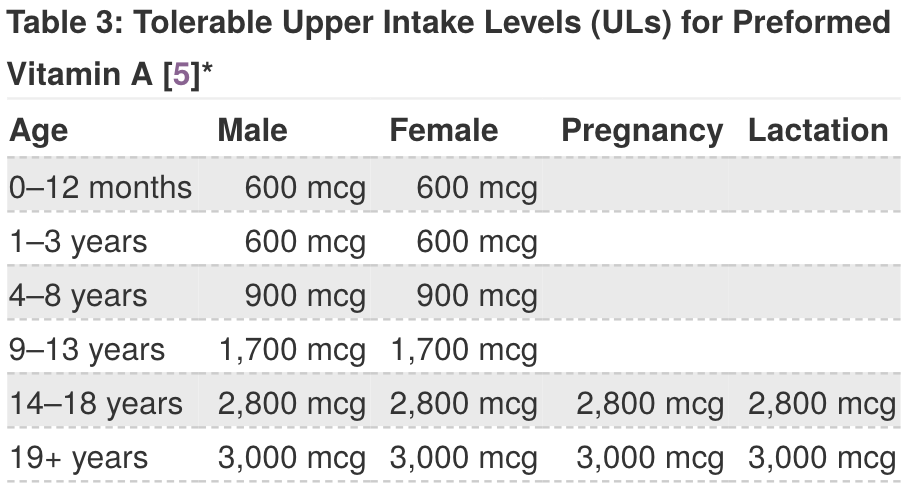
#2) Vitamin B12
B-vitamins, such as Vitamin B12, is another important micronutrient for hair growth. It helps to carry oxygen and nutrients to the scalp, which helps your hair to grow. However, when our bodies do not get the recommended amounts of vitamin B12, it can lead to hair loss. Since our bodies do not make vitamin B12, we have to get it from animal based foods like meat, poultry, eggs or fortified foods and supplements.
Getting enough vitamin B12 is critical because this vitamin deficiency comes with some serious health issues, such as:
- Weakness, tiredness, or lightheadedness.
- Heart palpitations and shortness of breath.
- Pale skin.
- A smooth tongue.
- Constipation, diarrhea, loss of appetite, or gas.
- Nerve problems like numbness or tingling, muscle weakness, and problems walking.
- Vision loss.
Low levels of vitamin B-12 are more likely in people over age 50. Vitamin B-12 is also more common in those with certain conditions, like digestive problems and some types of anemia. Low vitamin B-12 can cause fatigue, weakness, memory loss, and other problems with the nervous system.
Vegans, vegetarians who don’t eat eggs/dairy and the elderly are most at risk for becoming vitamin B12 deficient. Animal proteins provide some of the highest sources of vitamin B12. However, this can be combatted by adding more fortified foods (e.g. fortified cereals, pastas, rice) to your diet or by taking a supplement that has vitamin B12 in it. Nevertheless, it’s important to note that even vegetarians who do eat dairy and eggs still do not get the recommended daily amount.
The recommended dietary allowances (RDAs) of vitamin B12 vary by age and stage in life:
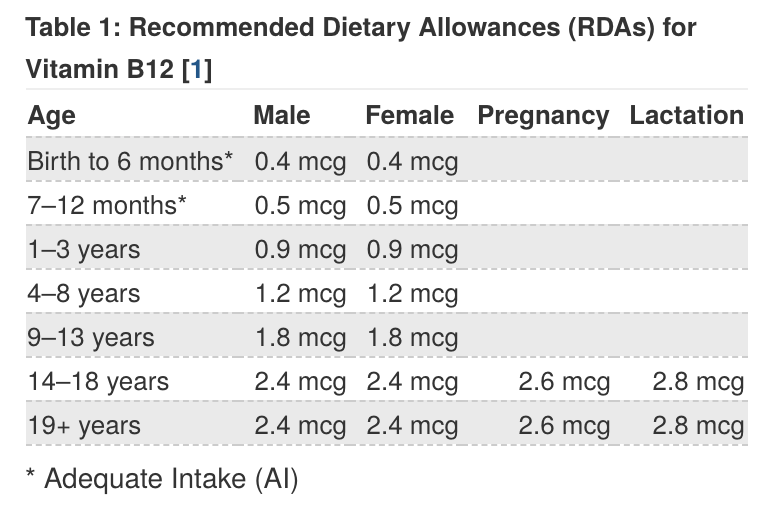
#3) Vitamin C
You may not think of vitamin C as being important for hair growth and healthy hair, but it plays a major role in maintaining healthy, strong and thick hair. Vitamin C is responsible for helping to create and maintain collagen. Collagen is what holds the dermal layer and hair follicle together, which keeps hair strong. Low collagen production in our bodies can lead to weak and brittle hair.
Another key role that vitamin C plays in hair growth is by aiding in iron absorption. Iron helps increase blood circulation and carries oxygen to hair follicles, which in turn helps hair grow faster and longer.
The recommended daily amount of vitamin C for adults is 90 mg for men, 75 mg for women, and up to 120 mg for women who are pregnant or breastfeeding.
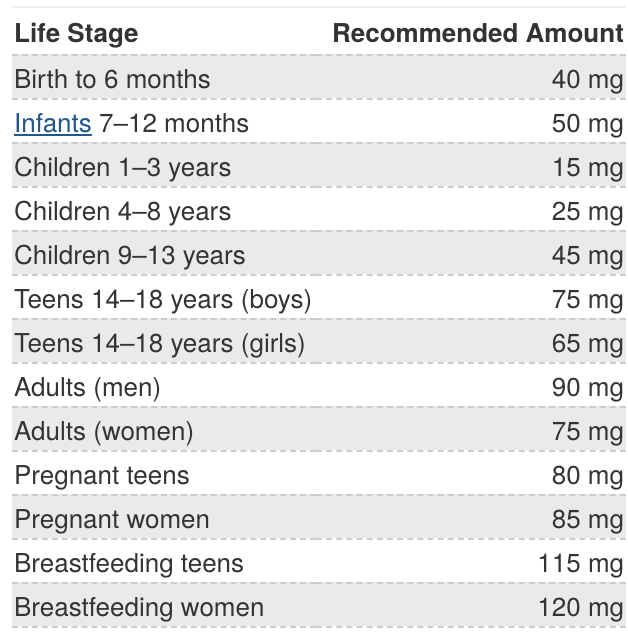
Vitamin C deficiency is not very common in the United States because many food and beverages have vitamin C in them. However, there are certain groups of people are more likely to be lacking this nutrient:
- People who smoke and those who are exposed to secondhand smoke, because smoke takes a toll on the body and more vitamin C is needed to repair such damage caused by free radicals. Smokers need 35 mg more vitamin C per day than nonsmokers.
- Infants who are fed evaporated or boiled cow’s milk, because cow’s milk has very little vitamin C and heat can destroy vitamin C. Cow’s milk is not recommended for infants under 1 year of age. Breast milk and infant formula have adequate amounts of vitamin C.
- People who don’t get a variety of foods in their diet.
- People with certain medical conditions such as severe malabsorption, some types of cancer, and kidney disease requiring hemodialysis.
#4) Vitamin D
Vitamin D is an essential, fat-soluble vitamin that is important for numerous biological processes within your body. It is also another important micronutrient for hair growth. However, vitamin D, is unique in that it’s not commonly found in many of the foods that we eat, with the exception of: fish, milk, soy, eggs and wild mushrooms. The way this vitamin is created is through a process called cholecalciferol synthesis, which happens when your skin is exposed to sunlight.
Vitamin D deficiencies are directly linked to alopecia, which is another term for hair loss. The reason vitamin D is so important is because it stimulates new and old hair follicles. When our bodies are low in vitamin D, our hair growth can be stagnant. Getting 10-30 minutes of sun exposure can be a great way to get the required vitamin D, but this can be difficult depending on a person’s lifestyle and climate they live in.
Below is a chart to show much vitamin D is needed by age:
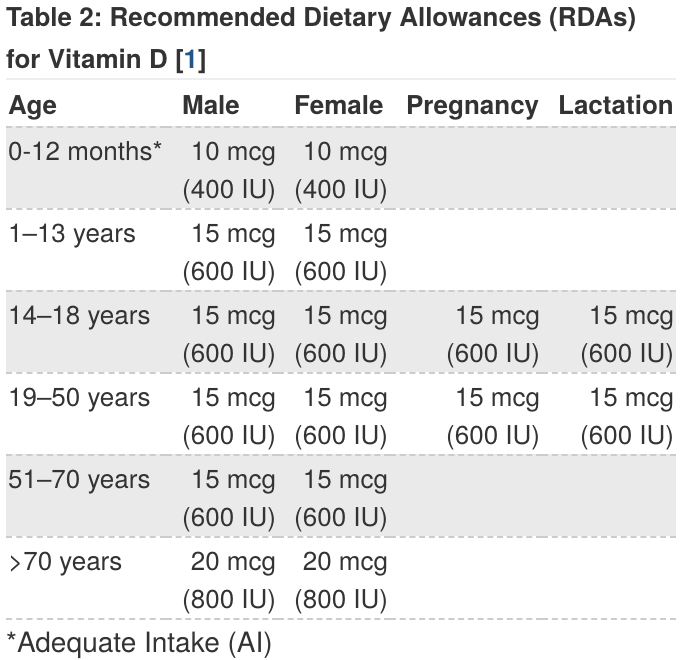
#5) Iron
Iron is a critical vitamin for our overall health and an important micronutrient for hair growth and health. This nutrient boosts circulation and is responsible for carrying oxygen to our follicles, which helps our hair grow faster and longer. When your body lacks iron, it can lead to hair loss. Iron is a key mineral that we take in and our body stores some of it in the form of ferritin. Ferritin is a type of protein in our blood that stores iron, and whenever your body is low on ferritin it can essentially “borrow” ferritin from your hair follicles and other store houses in your body that are not vital to your overall health. This is why it’s really important to get enough iron from the foods we eat so that we have proper amounts of ferritin in our bodies.
There are two types of absorbable dietary iron: heme and non-heme iron. Heme iron is found in animal products like meat, fish and poultry. Non-heme iron is found in foods such as green leafy vegetables, cereals and legumes.
Some good sources of iron include clams, beans, lentils, pumpkin seeds, sesame seeds, oysters, grass-fed beef and bison. People who only eat non-heme (meat free) sources of iron have to be careful to ensure they are getting an adequate amounts of iron. Those individuals should be sure to get adequate amounts vitamin C, which help with iron absorption.
Below is a chart to show how much iron is needed:
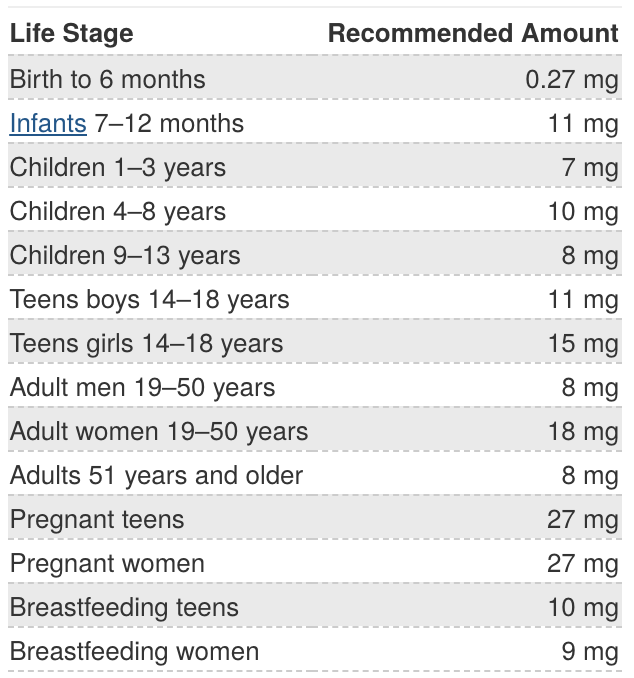
#6) Zinc
Zinc is another essential micronutrient for hair growth and that is key to overall health, as it is responsible for DNA synthesis, immune function, metabolism and growth. Our bodies need zinc for immune support, wound healing, cell division and growth, physical growth and development, and even your senses of smell and taste! The challenge is that our bodies do not store it.
In general, fruits and vegetables are poor sources of zinc. Animal proteins provide the best sources of zinc, including:
- Shellfish
- Meat
- Beans
- Nuts and seeds
Zinc deficiency can not only cause hair loss but it also can lead to:
- Frequent symptoms of the common cold
- Diarrhea
- Delayed wound healing
- A weak immune system
- Predisposition to infections
- A skin rash, especially around the mouth
- Skin ulcers
- Vision problems due to an increased risk of age-related macular degeneration
- Weight loss
- Hair loss
- Abnormal taste and/or smell sensation
- Difficulty concentrating
- Sexual dysfunction
- A predisposition to frequent asthma exacerbations
Women who are pregnant or nursing are at risk for becoming zinc deficient because growing babies need zinc for healthy development, and they are only able to get it from their mother. As a result, the mother can often be left with less than the required amount of zinc needed for her body.
Below is a chart to show the recommended amount of zinc by age:
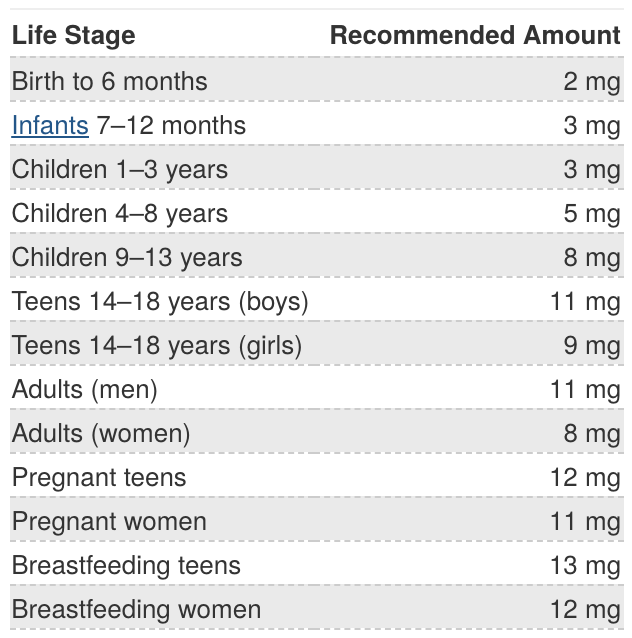
I hope this article has helped you better understand some micronutrients for hair growth that your body needs.
Latest posts by Brandelyn Green (see all)
- Everything You Need to Know About Moisturizing Oils Vs. Sealing Oils - February 15, 2024
- 4 Simple Tips To Slay Your Edges that You’ll Love - February 15, 2024
- 5 Benefits of Peppermint Oil That Will Make Your Hair Feel Like New - February 12, 2024
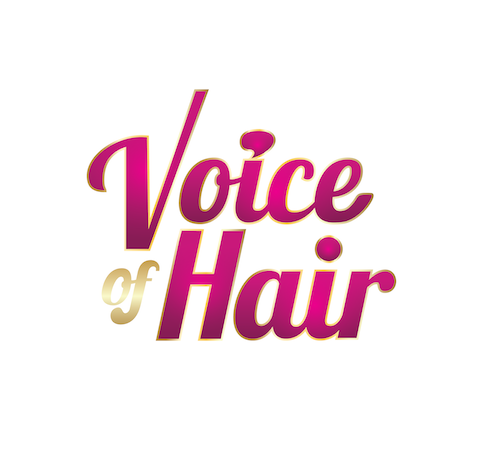
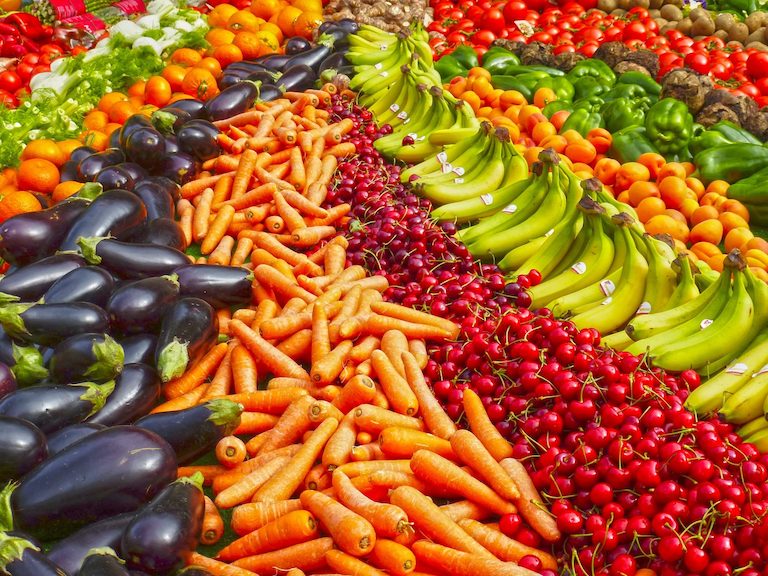
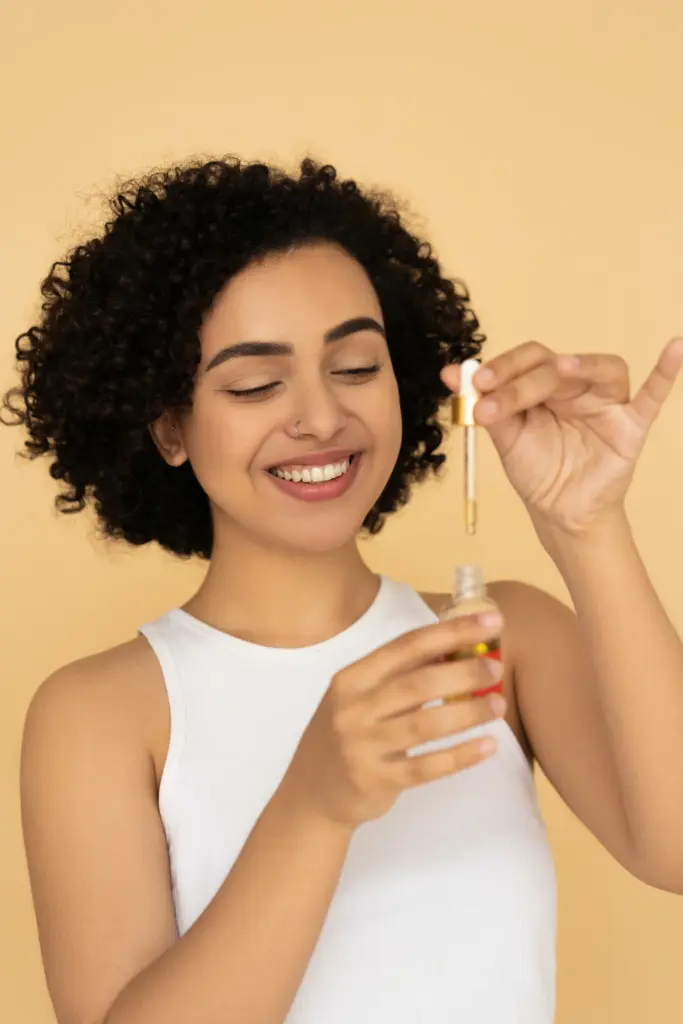

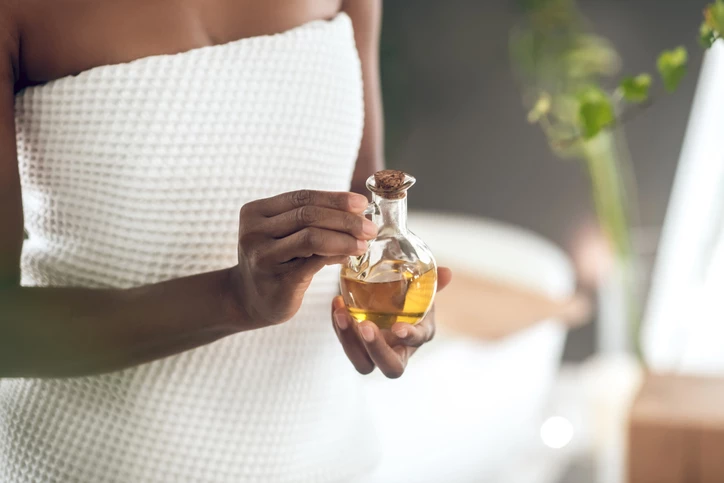
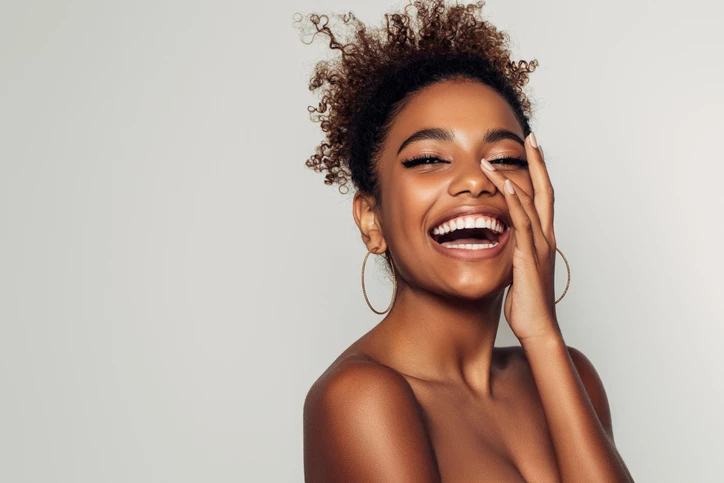
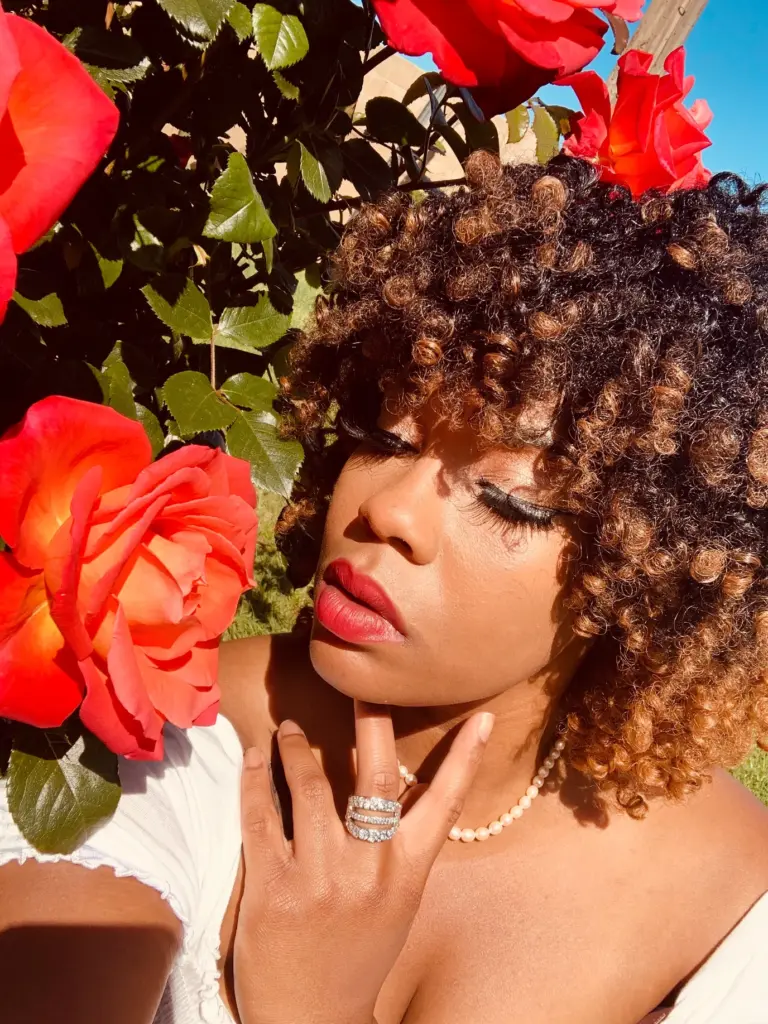
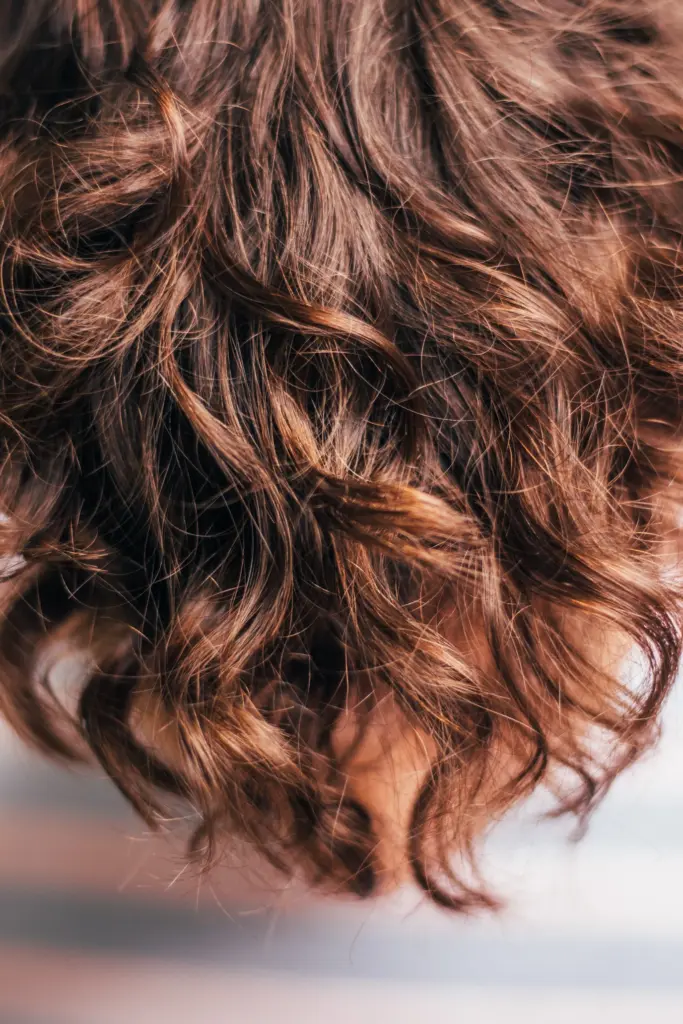
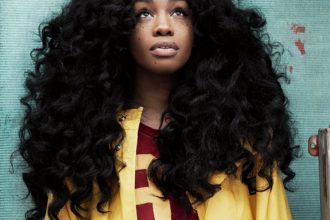
Hi Brandelyn, what is the name of the vitamin that u take for hair growth????
Hey Deborah, I take a multi vitamin that contains the micronutrients in this article. It has done wonders for my hair!
Do you know why one’s scalp would itch and burn if you don’t have dandruff?
Hi Elizabeth, here are a few reasons why your scalp could be itchy: https://voiceofhair.com/5-reasons-why-your-scalp-is-itchy-and-irritating/?utm_source=rss&utm_medium=rss&utm_campaign=5-reasons-why-your-scalp-is-itchy-and-irritating
What if your allergic to shell fish and iodine. Really bad
Hi Leslie, there are some other foods you can eat that provide similar benefits as shellfish. Which micronutrient are you referring to? I can try to provide some more guidance.
Thank you for helping me 😌☺️. I see where I come up short in so me areas. I will put forth the afford to share & get the word out
Hi Brandelyn. I have 4c hair. It is soft but it doesn’t have much a curl pattern and it is thick. I have tried gel, creams, hair butters and nothing World. What products do you have that can help define my curls and boost moisture?
Hi Patrice, thanks for reaching out! Do you clarify (deep cleanse) your hair regularly? Sometimes people struggle with defining their curls because they have a lot of product buildup from all of the products they apply to their . This is one of the reasons why our Quench collection includes a cleansing shampoo, Quench & Cleanse. Have you tried using a clarifying shampoo prior to conditioning and styling? Also, how do you wear your hair?